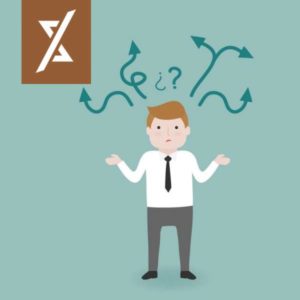The Evolution of the CRM

Posted November 28th, 2022 by Arnold Tijerina
Look at the dynamics of early-generation CRM platforms. They did solve problems and provide a variety of solutions, but there is a lack of accommodation for where we are today. How many CRMs have you seen in just the past five years that have been influenced by innovation, social media, new modern communication preferences, etc.? There’s been so much transformation (and at the same time, not enough) among what the consumer wants and expects.


Experience plays a large role in choosing the best CRMs and other tools for your dealership. PSX is a system that was developed within the last few years, and it has since been updated and improved to accommodate changes along the way.
How did we do this?
We looked at the dynamics of early generation CRMs. They did solve problems and provide a lot of solutions, but there’s a lack of functionality for where we are today. A lot of these CRMs have a 2002-2004 mindset. They were designed so that the manager could make sure that the salespeople have a daily plan and that they were following up on that. They were built to house “invaluable” customer information, and yet that information was rarely accessed or taken advantage of.
The average store has 2,000+ opportunities to follow up on every month. If we had known then what we know now, we may have taken a different approach. But at that time, we could barely get salespeople to enter customer information into the CRM and there was hardly any web integration for Internet leads. Internet leads used to all be manually entered into the CRM. Once they did start automatically flowing into the CRM, it was a big improvement.
Unfortunately, the conventional wisdom back then often involved sticking the least capable salesperson (greenpea or underperformer in sales) or someone who had “nothing better to do” back in the Internet department and calling it a day. What was once a department that no one really knew how to manage properly has now become one of the biggest sales generators for dealerships.
If we talk about customer relationship management then versus now, we look at not only why we needed it in the first place, but whether providers have been able to keep up with how fast other technologies are growing related to customer relationship management. And in the same regard, trying to bridge the gap between where we came from versus where we are today, there are a lot of things that have gotten lost along the way.
No one takes the time to help dealers understand where they may have deficiencies that are related to lost opportunities, not knowing what’s laying around the store, etc.
We’re not saying that the original CRM creators were wrong. In fact, they did a huge service to the powersports and automotive industries by starting the CRM revolution and trying to find ways to streamline operations within the dealership.
This “old” system comprised of yellow cards, pink cards, and green cards. It also included 12 cards for the months of the year and 31 cards for the days of the month. The pink and yellow cards were for leads, while the green cards were for sales. You would go through these files at any given time and follow-up on leads, get back to existing customers, etc. Then, you would re-file the cards for the next month (or in a couple months) and follow up on all of them again at that time.
That’s a lot of moving cards around, though, and it can get very confusing. Fortunately, technology quickly came along and provided a much better solution. There have been many attempts over the years to deliver all kinds of CRM platforms, including brand-specific options, independent CRMs, and more.
Now, we have reached a point where every single touchpoint is integrated—every call, every Internet lead, all your floor traffic—and it can all be accessed from your mobile device, smartphone, or any other computer.
At the end of the day, if you’re not integrating all these touchpoints, you’re not getting the information that you need so that you can be efficient. And, as mentioned earlier, efficiency is the key to success in the modern dealership.
The Expansion of Traffic Sources
While helpful to the overall success of the dealership, the increasing expansion of traffic sources is pulling people further from the dealer but bringing them closer to a solution that works for their needs. There was a time when your only traffic came from two places:
- Phone calls
- Walk-in floor sales
Now, you’ve got those along with third-party lead sources like social media, Internet leads, texting, chat, etc. This means that there are a multitude of ways that you must track so that you can figure out how people came to your dealership and what their communication preferences are.
To some, that might sound like a tall order. It might feel like we’ve taken a few steps back because now we have more work to do in chasing down lead and traffic sources and making sure that we know which avenues are getting the most traffic. However, it’s not any more work than you’re already doing. With a capable CRM, you can streamline the process by tagging all incoming customer data and queries with the source from which they came.
With a proper CRM, you have the tools to be helpful and fully capable of managing relationships with your customers. Of course, it’s not just about knowing your tools. It’s about making sure that you are informed on the processes that you are going to use and how to effectively use whatever tool(s) you are going to pick. And there are still a lot of dealers that need assistance with this.
Is It Working for You?
When you invest in a CRM, it’s not about if it’s working. The question is, are you working it? This is a dynamic tool, and you must work it if you want it to work for you.
CRMs that don’t work for salespeople create more work for your them. And if it is extra work, your salespeople aren’t going to use it. Which means you will be managing your entire store on very inaccurate information. This is not a good way to run a business. So, when selecting a CRM, focus on how you are working it and how it can work for your dealership to maximize customer relationships and improve your business overall.
At the end of the day, everyone wants tools that are clearly beneficial to the overall business, but also beneficial to individual roles. When salespeople realize that they have a system that is kind of a backstop, or a safety net, and it comes with great automation that makes sense, the interaction with it is extremely dynamic and different than early-generation CRMS. And this is the future of CRMs in the powersports and automotive industries, so it’s time to get on board.


